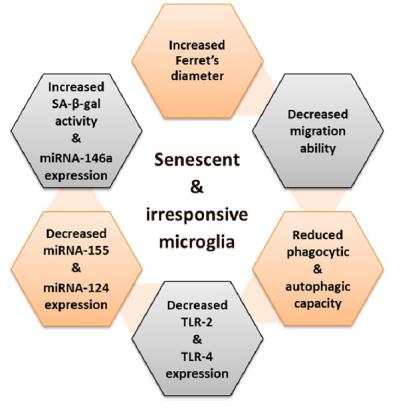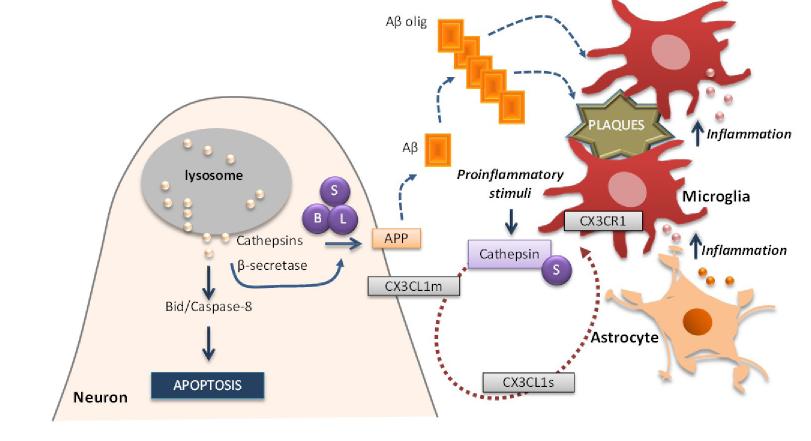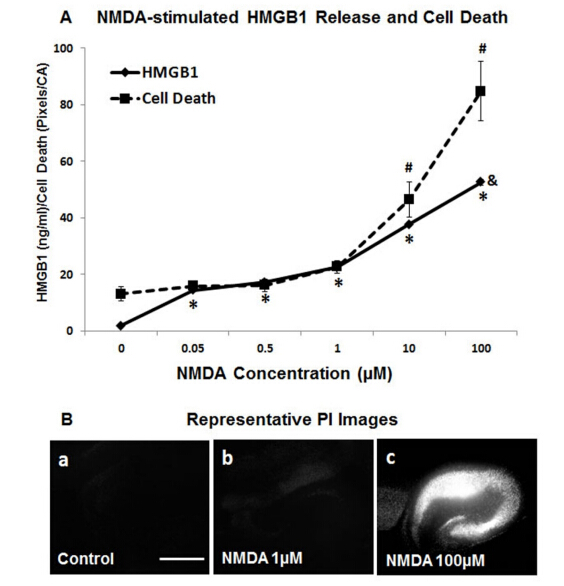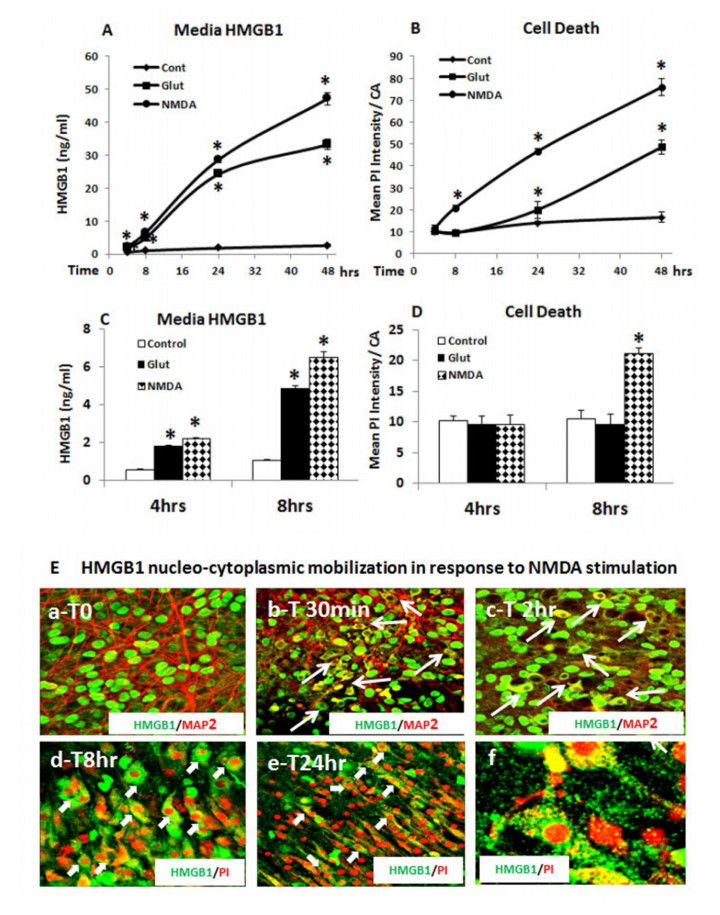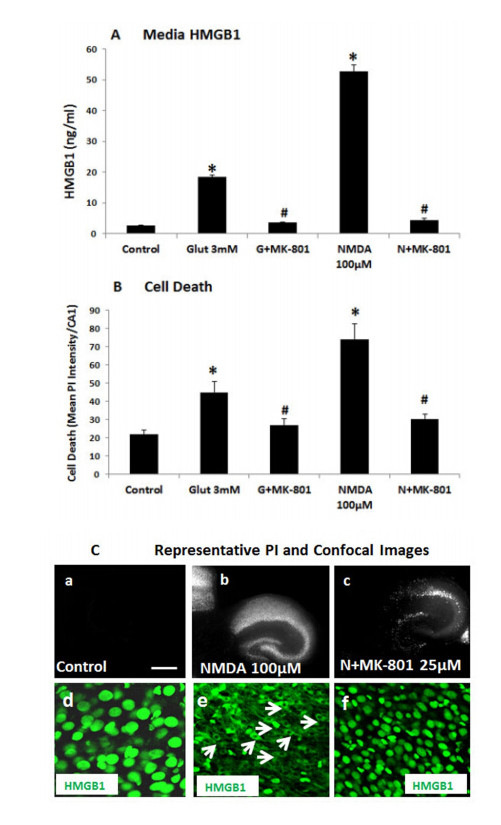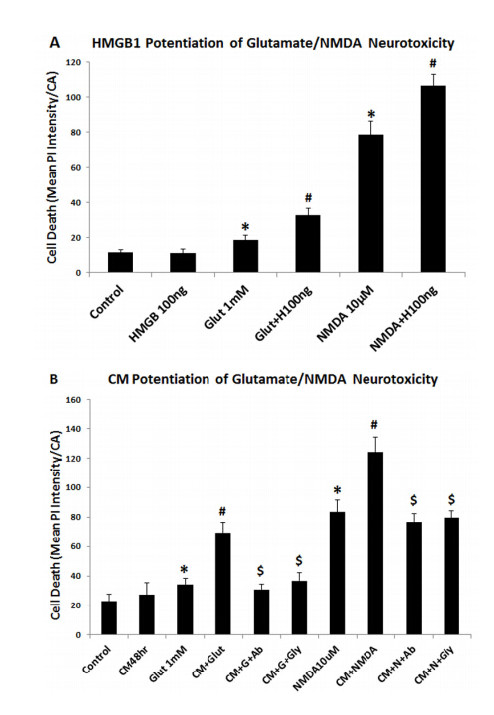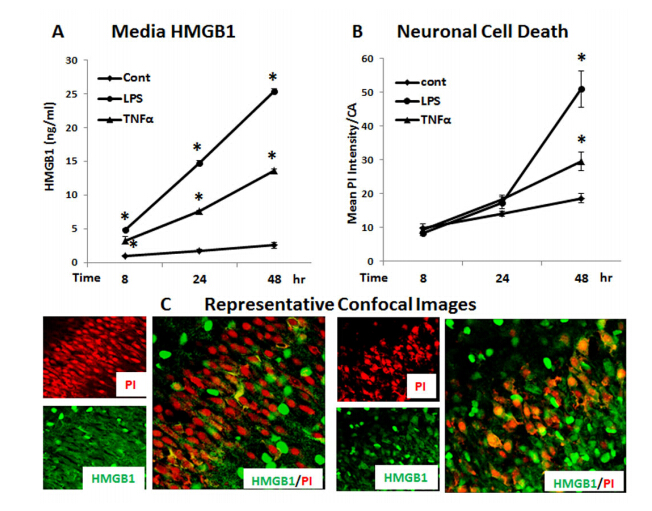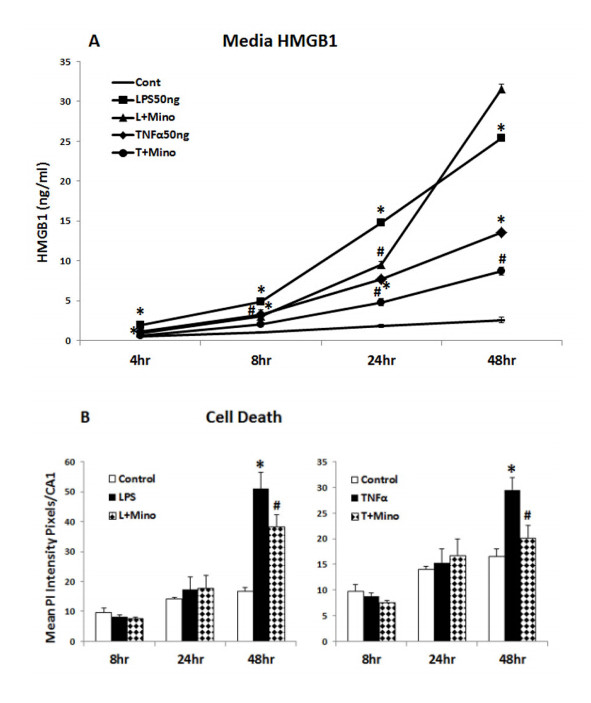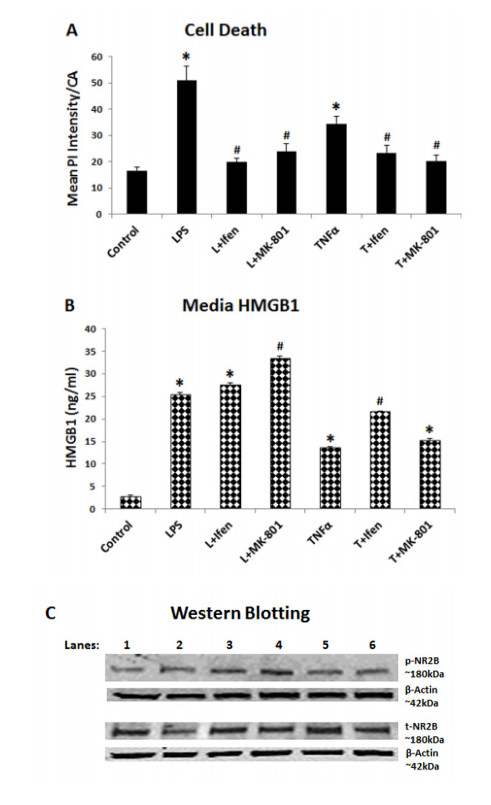1. Introduction
Ageing is associated with a declined ability to handle cellular stress, including impaired mitochondrial function, overproduction of reactive oxygen species (ROS), DNA damage, excessive accumulation of misfolded proteins and impaired microRNA (miRNA) processing that renders the cell more susceptible to stress [1]. Emde and Hornstein [1] support that the biosynthesis of miRNAs, which are small non-coding RNAs that mediate post-transcriptional activity, are intimately linked with the cellular stress signaling pathways. Actually, miRNAs are considered to have great relevance in ageing as in many other cellular processes [2]. Cellular senescence by preventing unlimited cell proliferation may also have implications in tumor suppression [3]. When gross chromossomal alterations occur during mitosis, the generation of signals may either lead to apoptosis and necrosis or to cell senescence generally known as mitotic catastrophe [4]. This cellular senescence due to an irreversible growth arrest, known as replicative senescence, may then be triggered by various events related with inflammatory stress, progressive telomere erosion and decreased regeneration ability [5]. However, it is also suggested that cellular senescence may promote tissue repair and cancer progression [6]. Indeed, the senescent cells develop a senescent-associated secretory phenotype (SASP) whose factors (e.g. growth factors, proteases chemokines, interleukins, and extracellular matrix components) may favor the appearance of aggressive cancer cells phenotypes in the neighborhood or attract immune cells, as well as mobilize stem and progenitor cells for resolving tissue damage [6,7,8]. Nevertheless, cellular senescence and ageing are consistently considered risk factors for the pathogenesis of most neurodegenerative disorders, including Alzheimer’s disease (AD) [9,10], Parkinson’s disease (PD) [11,12], amyotrophic lateral sclerosis (ALS) [13,14], cerebrovascular disorders [15,16] and glaucoma [17]. For instance, neurovascular changes (comprising brain endothelial cells, pericytes, glia and neurons) and dysfunction of the blood-brain barrier (BBB) by ageing has been considered to eventually precede neuronal changes and the occurrence of neurodegenerative diseases, such AD [18]. Similarly, dysfunction of the blood-cerebrospinal fluid barrier (BCSFB) was suggested to relate with age-associated cognitive decline and neurodegenerative disease [19]. Ageing also contributes to an increased production of amyloid-beta (Aβ) peptide associated to AD [20], even considering that the amyloid cascade hypothesis is a controversial issue [21].
It is now accepted that the senescent cells are functionally altered and their number increase with ageing [22,23,24]. Cellular senescence occurs in culture and in vivo as a response to excessive extracellular or intracellular stress and was shown to accumulate along life, mainly in renewable tissues and during persistent inflammation [8]. Hallmarks of the senescent cells are increased expression of senescence-associated beta-galactosidase (SA-β-gal) [25] and p16INK4a, commonly expressed by quiescent or terminally differentiated cells [6], together with the appearance of SASP and its associated robust secretion of factors [8].
Senescent cells increasingly release vesicles that have been commonly designed as exosomes and microvesicles or ectosomes (Figure 1). While exosomes may either activate or inhibit the immune system depending on the expressed proteins, ectosomes are suggested to have anti-inflammatory/immunosuppressive properties [26]. The packaging of miRNAs into vesicles are an important step to their delivery into target cells by plasma membrane fusion and endocytosis. Once they may be differently represented when released by senescent cells it is conceivable that such miRNAs can be implicated as detrimental factors in ageing [27].
Here we will summarize the common denominators of ageing (Table 1), the current knowledge on the cellular processes that predispose to neurodegeneration and we discuss the pathogenesis of age-related neurodegenerative diseases, including AD, PD, ALS and cerebrovascular disease. Linkage between cell senescence and deregulated signaling networks will be uncovered. We also give an overview on the existing knowledge on microvesicular secretion of miRNAs, their potential impact on cellular senescence, and implication in brain ageing and associated vulnerabilities to oxidative stress and inflammation. Finally, we will review recent information on interventions directed to rejuvenate senescent cells and on cell replenishment approaches.
Table 1. Candidate hallmarks and contribution to ageing
|
Hallmarks of ageing
|
Causes
|
Relevance
|
|
Genomic instability
|
Increased DNA damage accumulation throughout life (delayed nuclear DNA repair, mutations and deletions in aged mitochondrial DNA, and defects in the nuclear architecture)
|
Relevance to normal ageing remains unsolved
|
|
Telomere attrition
|
Progressive and cumulative loss of telomere-protective sequences from chromosome ends, short telomere length
and activation of DNA damage response (DDR)
|
Pathological telomere dysfunction accelerates ageing in rodents and humans
|
|
Epigenetic alterations
|
Alterations in DNA methylation patterns, post-translational modification of histones, chromatin remodeling and transcriptional alterations (non-coding RNAs, including a class of miRNAs designated by gero-miRs)
|
Understanding and modulating the epigenome may prevent/delay age-related disorders and extend healthy lifespan
|
|
Loss of proteostasis and impaired protein homeostasis
|
Chronic expression of unfolded, misfolded or aggregated proteins due to failure in restoring the structure of misfolded proteins and inability to remove/degrade such proteins
|
Accumulation of damaged components
|
|
Deregulated nutrient-sensing
|
Decline of the growth hormone and insulin-like growth factor, increase of mTOR, down regulation of AMPK and increase/decrease of sirtuins
|
Increased lifespan or healthspan by dietary restriction
|
|
Mitochondrial dysfunction
|
Increased production of reactive oxygen species, defective bioenergetics, alterations in mitochondrial dynamics by fission and fusion imbalance of events, changes in the lipid composition of mitochondrial membranes and defective quality control by mitophagy
|
Although severe mitochondrial dysfunction has a high impact in the processes of ageing, mild respiratory deficiencies may extend lifespan, possibly by hermetic response
|
|
Accumulation of senescent cells
|
Increased generation of senescent cells or decreased clearance rate of those cells, resulting from reduced immune response, or from acquisition of a senescence and proinflammatory associated secretory cell phenotype
|
Though cell senescence prevents the spread of damaged cells, their accumulation, by inefficient cell replacement mechanisms, may exacerbate damage and favor ageing
|
|
Stem cell exhaustion
|
Decline in the regenerative potential by deficient proliferation of stem and progenitor cells, or exhaustion of stem cell niches by excessive proliferation of those cells
|
Prevention of stem cell decline and cell rejuvenation to reverse the aging phenotype may halt exhaustion
|
|
Altered intercellular communication
|
Deregulated neurohormonal signaling, increased inflammatory signaling pathways and deteriorated cell-cell cross-talk
|
Restoration of defective cell-cell communication
|
Based on the works by López-Otín et al. [36], Morrison and Hof [37], Ren et al. [38] and Freund et al. [39].
2. Brain cell senescence: causes and consequences
Cellular senescence is characterized by an irreversible growth arrest and a combination of changes in cell morphology, function and behavior. It was first described as resultant of replicative senescence (RS), i.e. most cells cannot divide indefinitely as a consequence of finite number of cell doublings [28], even in the presence of nutrients and growth factors, but remain viable for weeks. Senescent cells are also induced by continued stress and damage from various stimuli, including DNA-damaging agents, oxidative stress, chemotherapeutic compounds and overexpression of oncogenes [29]. The senescent phenotype is characterized by irreversible growth arrest, apoptosis resistance and gene expression modification [30]. One of the first markers to be used in the identification of senescent cells was the SA-β-gal [25] due to increased lysosomal biogenesis in senescent cells [31,32]. Promising additional markers are the proteins acting as negative regulators of the cell cycle such as p15IK4b, p16INK4a and decoy death receptor-2 (DCR2) [33,34]. Others include the up-regulation of cathepsin D and down-regulation of eukaryotic translation elongation factor 1beta2 [35]. However, the search of definitive senescence biomarkers is still ongoing.
The first step toward senescence seems to involve the combined activity of two tumor tumor-supressor proteins, p53 and retinoblastoma protein (pRB). Accumulating evidence indicates that the p53-p21 pathway is implicated in senescence due to telomere shortening or DNA damage, while p16-pRb pathway is partly involved in stress-induced premature senescence (SIPS) [29]. Both RS and SIPS are believed to create a barrier to tumorigenesis.
Cells undergoing senescence produce increased release of inflammatory cytokines [38] and SASP cells secrete interleukin(IL)-6, IL-8, IL-1α, IL-1β and metalloproteinases [6,8]. In addition, chronic inflammation creates a feedback loop in the immune system that leads to overproduction of cytokines and increased risk of deleterious effects [39]. Senescent cells accumulate with age and are present in sites of age-associated pathology, while contributing to age-related diseases [27,30]. Interestingly, the increase in p16 expression is associated with a reduced cell progenitor function and neurogenesis, thus contributing to reduced regenerative capacity in mammalian ageing [40].
2.1. Senescence of endothelial cells at CNS barriers
Senescence of endothelial cells was shown to compromise the integrity of barriers at the interfaces between the central nervous system (CNS) and the circulating blood, mainly by affecting tight and adherens junctions [41,42].
Although BBB is the most mentioned one, it is now recognized that BCSFB also has an important role by producing most of the cerebrospinal fluid (CSF) [43]. These barriers participate in the CNS homeostasis preventing the entrance of harmful substances from the circulation while transporting nutrients and metabolic compounds in and out of the brain.
The BCSFB is formed by the epithelial adjacent cells of the choroid plexus connected by tight junctions. The existence of microvilli on the apical surface and interdigitations on the basolateral surface, allow the exchange between the blood and the CSF [44].
Changes in BBB and BCSFB functions may be critical in age-related vulnerabilities and neurodegenerative diseases. Decrease in microvessel density, alterations of endothelial cells, including focal necrosis and reduced mitochondrial density, loosening of tight junctions and increased pinocytotic vesicles, together with decreased CSF production and turnover are among the most described modifications in such conditions [43]. Although not clarified whether cerebral vascular dysfunction is a cause or a consequence of AD, it has been associated with disease progression and neuroinflammation [45,46]. Vascular lesions were found in the majority of cases of AD with late onset dementia and in nearly one half of those with early onset dementia [47]. Although leucocyte infiltration is not a predominant feature in the AD brain, increased T cell migration was observed in patients, albeit at low numbers [48]. Data also indicate a transmigration of monocytes into the CNS as a specific response to Aβ in vitro, similarly found in the brain of AD transgenic mice [49,50].
While BBB leakage [51] and impaired glial-vascular network involving astrocytic hypertrophic morphology and microvascular degeneration were found in aged rats [52], a BBB compromise was likewise observed in cerebral amyloid angiopathy [53]. Interestingly, the presence of microglial clusters, together with the increased expression of vascular endothelial growth factor (VEGF) in individuals with severe AD, was suggested to be related with vascular remodeling [54]. Interestinlgy, deposition of Aβ in the meningeal and intracerebral vessels was referred to be more age-related than AD-dependent [55]. However, we should not neglect that an increased causative effect of Aβ on the neurovascular injury may occur [56].
Endothelial cells were demonstrated to play a key role in BBB properties constituting its anatomic basis together with the basal membrane, although recent evidences indicate that such cells are intimately related with pericytes and astrocytes and interact with neurons, microglia and oligodendrocytes [57]. The endothelial cell monolayer is characterized by the absence of fenestrations, low pinocytic vesicle number and elaborated tight and adherens junctions [58]. BBB dysfunction may derive from a simple transient opening of tight junctions to chronic barrier breakdown causing increased permeability. Acquisition of SASP phenotype in endothelial cells was shown to be associated with pathogenic miRNA signaling, (in Section 3.4), in particular miRNA(miR)-221, miR-155 and miR-21 [59,60]. In addition, the presence of miR-214 in endothelial cells that was shown to stimulate migration and angiogenesis in recipient cells was found decreased in senescent cells [61], thus justifying an impaired angiogenesis contributing to age-related cerebro-microvascular rarefaction and cognitive impairment. Also accounting to such dysregulation is the down-regulation of Dicer1 expression observed in aged endothelial cells [62].
2.2. Senescence of neurons and glial cells
Neurons are particularly vulnerable to age-related changes that affect their function and contribute to the onset of age-related neurodegenerative pathologies, namely AD and PD, although such association has been considered controversial [37]. More than the loss of neurons, their functional plasticity impairment by synaptic changes is considered to play a key role [63,64,65]. The extensive loss of axons during ageing was suggested to be implicated in the loss of connections and to trigger gradual cognitive decline, as well as sensorial and motor function failure [17]. The reduction in synaptic number and plasticity was shown to be associated to learning deficits in the ageing brain [65]. Such axon loss seems to not be a consequence of neuronal cell death, as axon loss really exceeds death of the corresponding cell bodies. As a matter of fact, no more than 10% neuron loss was found to occur by ageing [66]. The loss of neurites before cell death may derive from aberrant mitochondrial dynamics due to detrimental fission [67], although many other causes, including genetic and environmental factors may be considered as well [68]. A recent study using in vivo two-photon imaging in aged mice identified increased rates of axonal bouton dynamics and synaptic instability associated with age-related cognitive impairment [69].
Recent evidence indicates that although the number of neocortical neurons do not differ between the aged 65‒75 years individuals and the very old people with 94‒105 years, there is a significant difference in the total number of neocortical glial cells between such age groups, mainly due to reductions in the number of oligodendrocytes [70]. The study is consistent with an age-related reduction in white matter volume previously observed in subjects at 80-year-old when compared to the age of 20 [71].
Astrocytes were shown to have a more inflammatory phenotype with age and to undergo a functional decline, both in vivo and in vitro studies, and to accumulate in aged brain [24,72]. Moreover, the inflammatory phenotype may disturb the integrity of the BBB since protein expression and distribution in endothelia are induced by astrocyte-derived signals, which also modulate BBB permeability and can be depleted in ageing [73,74]. The increased expression of the senescent biomarker p16INK4a in senescent astrocytes was suggested to derive from the cumulative impact of stressors and to be associated to age-related susceptibility to sporadic AD [24]. Neuroglial aged cocultures have shown several senescence features that include progressive accumulation of SA-β-gal, increase in protein oxidative damage and in the proinflammatory cytokine IL-6, together with the down-regulation of miR-17, miR-19b, miR-20a, and miR-106b [75].
Studies point to a different distribution of microglia with ageing and to the existence of dysfunctional cells that may influence the functionality of the surrounding ones. Dopaminergic neurons seem to be particularly vulnerable to oxidative stress by the deregulated microglia [76] and the reduced clearance of Aβ peptide by the senescent microglia contributes to the pathogenesis of AD [77]. Smaller dendritic arbors and more elongated shape were observed in the aged microglia [78,79]. Dystrophic morphologies that include deramification, spheroid formation, shortened and twisted cytoplasmic processes, as well as partial or complete cytoplasmatic fragmentation, were observed in the older brain [80,81]. However, such dystrophic morphology corresponds to only a microglia subtype located along with normal surveilling and ramified cells [82]. Indeed, microglia degeneration and loss of microglial neuroprotection, rather than activated microglia, was indicated to contribute to the onset of AD [83]. It has been hypothesized that during chronic mild neuroinflammation [84,85] the microglia phenotype switch from M2 (alternatively activated microglia) to M1 (classically activated) [86,87], but this inflammatory scenario may only occur in the early stages of the disease. Such features seem to disappear with AD progression [88] as microglia become less able to respond to Aβ peptide in elderly [89,90]. This picture is reinforced by the fact that nonsteroidal anti-inflammatory drugs (NSAIDs) were only successful when administered before the development of neurodegeneration [91]. When NSAIDs were administered in later stages of disease they even showed to be detrimental [93] and that older microglia internalize and redistribute less Aβ than young ones [90]. A recent study demonstrated that aged microglia in culture are less responsive to neurotoxins, such as bilirubin and Aβ, and evidenced less autophagic capacity and ability to migrate and phagocytose, reduced expression of toll-like receptor (TLR)-2, TLR-4, miR-124 and miR-155, together with increased SA-β-gal activity and miR-146a expression [94] (Figure 2). To note, however, that the poorly immunogenic properties of aged macrophages were suggested to be reversed by a proper environment or adequate stimulation [77]. Therapeutic approaches for the rejuvenation of microglia are discussed in section 5.2.
3. Ageing promotes disease at the cellular level and local networks
Ageing is a progressive degenerative process tightly associated with chronic inflammation, derived from redox stress, mitochondrial damage, immunosenescence, and age-related diseases. In fact, although senescence and exhaustion may compromise immunity they seem to be distinct processes mediated by different signaling pathways, at least in T cells [95]. Immunosenescence is associated with decreased immune functions and cell proliferation in the presence of mitogenic or antigen stimulation in ageing immune cells [96]. The accumulation of age-related imperfections in cells and tissues may trigger inflammation in response to stressful conditions, where mitochondrial dysfunction can be both the cause or consequence [97]. This deterioration is a major risk factor for neurodegenerative diseases, and altered intercellular communication and inflammageing are important hallmarks [36]. Inflammageing results from prolonged exposure of the immune system to stimuli and is associated with age-related chronic disease, functional decline and frailty [98].
Lately, miRNAs are emerging as modulators of nuclear factor(NF)-κB, mammalian target of rapamycin (mTOR), sirtuins, tumor growth factor(TGF)-β and Wnt signaling pathways, that may be related to inflammation (inflamma-miRs), cellular senescence (SA-miRs) and age-related diseases, including cancer-associated (onco-miRS) [99]. Another essential aspect is the disruption of the communication between neurons and the neighboring glial cells, as the neuronal fractalkine and its receptor CX3CR1 in microglia. Intriguingly, the natural reduction of fractalkine with age in hippocampus was shown to be associated with cognitive decline and its up-regulation may represent a novel therapeutic strategy [100].
New data indicate that formation and accumulation of protein aggregates may increase with ageing due to failure of protective pathways that include the unfolded protein response, the ubiquitin proteasome system and autophagy [101]. Autophagy is a recycling process essential for cell survival and differentiation mediated by autophagosomes that engulf cytoplasmic contents and fuse with lysosomes, delivering their content that will be digest by in situ hydrolases [102]. Thus, autophagy represents an essential cytoprotective pathway that participates in the maintenance of homeostasis. Since accumulation of autophagic vacuoles is one of the pathologic hallmarks of degenerating neurons in AD, a causative connection between autophagy failure and neuronal death is believed
to be present [103]. Interestingly, dysregulation of autophagy in neurons may lead to increased secretion of toxic proteins in exosomes favoring the spread of neurodegenerative diseases [104]. That’s why a close relationship between autophagy and biogenesis and secretion of exosomes was recently suggested [105]. While autophagy declines with age, as observed by the decreased expression of key autophagy genes such as ATG5 and ATG7 in the brains of aged individuals [106], the release of exosomes is increased in senescent cells [107]. Therefore, how the two mechanisms are related and coordinated is still a matter of discussion.
3.1. Mitochondrial dysfunction
Mitochondrial dysfunction with accumulation of somatic mitochondrial DNA (mtDNA) mutations and decline in respiratory chain function is related with the ageing process [108]. Mitochondrial dysfunction has been associated with the increased generation of ROS, which affects replication and transcription of mtDNA causing mitochondria failure, and further damage of mtDNA and ROS production [109]. In aged individuals, mitochondria evidence a reduction in oxidative capacity, oxidative phosphorylation, ATP production and antioxidant defense [110]. Depolarized and damaged mitochondria are the substrate for mitophagy [111], a selective type of autophagy that eliminates damaged or unnecessary mitochondria [112]. In ageing-related diseases it is observed an accumulation of dysfunctional mitochondria by defects in mitophagy [113]. Autophagic removal of mitochondria is important for mitochondrial quality control. These two processes contribute to the preservation of energy and accumulation of damaged and aggregated proteins [114]. Therefore, many nutrients have been suggested to rejuvenate the aged mitochondria, including vitamins and other bio-energetic enhancers [115,116,117,118]. Alterations in the rate of mitochondrial fission and fusion may contribute to the decline in mitochondrial function during ageing [119] and mitophagy was found to depend on fission [120]. If mitochondria are not removed by mitophagy, the alterations on the mitochondrial permeability transition may determine the release of pro-apoptotic proteins and apoptosis. However, senescent cells are somehow resistant to apoptosis and both apoptosis and autophagy significantly decline with ageing [121,122]. In such conditions, increased mitochondrial biogenesis tends to overcome the bioenergetically dysfunctional mitochondria leading to an increase in mitochondrial mass [123]. Several interventions, such as caloric restriction, antioxidants, exercise and pyruvate, among others, have been proposed to influence mitochondrial biogenesis and to be therapeutically useful [124]. In a recent study, the serine protease Omi was identified as a novel regulator of mitochondrial biogenesis once it was shown to cleave the glycogen synthase kinase 3β (GSK-3β) which, if increased, triggers the degradation of the PPARγ coactivator-1α (PGC-1α), causing an impairment of mitochondrial biogenesis and neurodegeneration [125]. GSK-3β inhibitors were then suggested to have a key role in blocking inflammation [126,127]through the activation of autophagy [128].
3.2. Imbalance of cathepsins and of the CX3CL1/CX3CR1 signaling
There is increasing evidence that disturbance of the normal balance of the enzymatic activity of cathepsins and their extralysosomal localization are among the first consequences of ageing and age-associated neurodegenerative diseases [129]. The activation of the endosomal/lysosomal system was suggested to be associated with increased production of Aβ peptides [130]. The amyloid precursor protein (APP) is metabolized by secretory (β-site APP cleavage enzyme: BACE) and endosomal/lysosomal pathways (β-secretase activity of the cathepsins S, B and L) [131,132,133]. Aβ secretion revealed to be particularly linked to the ability of cathepsin S to generate Aβ from amyloidogenic fragments of βAPP in the endosomal/lysosomal compartment [134]. Leakage of cathepsins into the cytoplasm subsequent to the disintegration of lysosomal membrane increase with ageing and if cathepsins B, H and L are relatively unstable [129], cathepsins D, E and S are stable and may degrade intracellular and extracellular proteins [135]. Up-regulation of the endosomal/lysosomal system was observed in damaged neurons of AD patients [130] and in activated microglia, where the secretion of cathepsin B and S has been indicated to induce neuronal death [136,137]. To consider that, apart of caspases, cathepsins are also associated with cell death regulation when released from the lysosome into the cytoplasm [138,139,140]. In particular, cathepsins have been shown to activate caspase-8 and to induce the cleavage of the pro-apoptotic Bcl-2 family member Bid, mitochondrial damage and subsequent caspase activation and apoptosis [141,142] (Figure 3).
Intriguingly, cathepsin S was recently shown to be involved in age-related inflammatory processes, AD and neuropathic pain [143,144,145,146], and its inhibition prevented the upregulation of proinflammatory factors in the brain cortex after traumatic brain injury in mice [147]. In addition, the release of cathepsin S from microglia was shown to be necessary for the cleavage of the transmembrane chemokine fractalkine or CX3CL1 from neurons [148,149], which further activates the pathway through the receptor CX3CR1 in microglia [150] (Figure 3). There is a lot of controversy on the role of CX3CL1-CX3CR1 axis on age-related neurodegenerative disorders and AD, as well as on the effects that CX3CR1 up- and down-regulation may have at the level of microglia migration and phagocytic ability towards Aβ. Some studies demonstrated that CX3CR1 expression was not altered in ageing or AD, while fractalkine gene expression was downregulated in the hippocampus, suggesting a loss of communication between neurons and microglia [151]. Deletion of CX3CR1 in a mouse model of AD increased the release of inflammatory cytokines, exacerbated neuronal dysfunction and potentiated cognitive deficits [152]. Lacking of the CX3CR1 receptor led to impairment of hippocampal cognitive function and synaptic plasticity [153]. However, other studies observed that both CX3CL1 and CX3CR1 decrease with advancing age [154,155] and that CX3CL1 signaling is deficient in AD brains and is down-regulated by Aβ [153]. In addition, plasma soluble CX3CL1 was higher in patients with mild to moderate AD than in the severe cases [156]. The issue is by no means clear and deserves further studies that demonstrate the role of such players in the process of ageing and in AD. Indeed, CX3CR1 deficiency showed to reduce Aβ deposition, as well as neuritic distrophy, while enhancing microglia phagocytic ability [157], and CX3CL1 demontrated to promote microglial phagocytosis of neuronal debris through the release of milk fat globule-EGF factor 8 (MFG-E8) [158], suggesting that benefits may be obtained by increasing fractalkine expression.
In the normal brain, Aβ is degraded within lysosomes, but in the AD brain it first accumulates within lysosomes and late endosomes, triggering the release of hydrolytic enzymes into the cytoplasm, followed by trafficking into autophagic vacuoles and neuronal death. Such degenerating neurons release the intracellular amyloid peptides into the extracellular space, which aggregate to form senile plaques that contain lysosomal proteases, including cathepsins [103]. Microglial cells were shown to aggregate around amyloid plaques in AD, to change their morphology and process motility [159], and to overexpress the potent pro-inflammatory cytokine IL-1 [160]. In ageing, the coverage of Aβ plaques by microglia is reduced leading to enlarged protofibrillar Aβ42 hotspots and more severe neuritic dystrophy. When the CX3CR1 gene was deleted it was found lower brain levels of Aβ40 and Aβ42, as well as reduced amyloid deposits, due to the increased microglial coverage and phagocytic ability together with a reduced neuritic distrophy [161,162]. In what concerns astrocytes it is well known that stress and injury trigger the up-regulation of the expression of pro-inflammatory cytokines and chemokines, which are associated with the pathogenesis of AD where Aβ, S100B and IL-1 are associated with Aβ generation between astrocytes and neurons leading to sustained neuroinflammation [163] (Figure 2). In addition, enhanced cytokine levels were shown to increase BACE, APP and Aβ levels and stimulate amyloidogenic APP processing in astrocytes [164], contributing to the progression of the disease.
We may conclude that a better understanding of cathepsin imbalance during ageing and neurodegenerative diseases may contribute to the development of novel neuroprotective approaches. Additional studies are necessary to further define the role of CX3CL1/CX3CR1 signaling in the age-related susceptibilities to AD pathophysiology, while further elucidating microglial toxic or protective effects in order that therapeutic strategies may trigger microglia rejuvenation and neuroprotection by promoting Aβ clearance without inflammation.
3.3. Excessive accumulation of misfolded proteins
The accumulation of misfolded proteins is a recurring event during brain ageing and it was shown to be exacerbated in several neurodegenerative diseases. It has been suggested that protein accumulation may result from a dysfunction in the ubiquitin proteasome system [165]. Ageing is associated with progressive accumulation of structurally and functionally abnormal proteins, being oxidative stress a major contributor. Chronic oxidative stress is considered to lead to protein misfolding or unfolding, resulting in proteins unable to carry out their normal functions due to inefficient turnover by proteasomal and lysosomal pathways [166]. Such molecules that oligomerize and form aggregate structures are hallmarks of a range of neurodegenerative diseases including AD, PD and ALS, among others, all of them associated with ageing [167]. Proteostasis network decline in performance is also caused by mutations eventually leading to proteostasis collapse and cell death [168]. Selective proteotoxic toxicity is observed with specific proteins such as huntingtin and Aβ suggesting that neuronal cells may be maladapted to the stress of misfolded proteins. Enhanced autophagy and restoration of the control machinery capacity can have potential therapeutic benefits [169]. Damaged and misfolded proteins may bind to chaperones, which are highly conserved proteins that assist in the folding of proteins, thus leading to heat shock factors (HSFs) release [170]. HSFs are transcriptional activators of heat shock genes [171]. Cellular senescence was indicated to trigger the degradation of HSFs leading to an accelerated ageing [170]. In recent years, it was discovered that proteins in the cytosol can cross the lysosomal membrane, a process called chaperone-mediated autophagy, leading to the degradation of damaged or abnormal proteins. Such mechanism was shown to be impaired by ageing [172]. The deficiency seems to be related with alterations in the lipid composition of the lysosomal membrane mainly related with increased degradation of LAMP-2A.
3.4. Alteration of microRNAs in ageing and age-associated neurodegenerative diseases
miRNAs are short non-coding RNA molecules that intervene in gene regulation acting as repressors, as well as activators, mainly at the post-transcriptional level [173,174]. Mature miRNAs are between 18‒25 nucleotides in length. One miRNA can target multiple mRNAs, and one mRNA can be targeted by multiple, distinct miRNAs. Therefore miRNAs can significantly alter gene expression regulatory networks [175].
While not much has been published on miRNA secretion during the process of ageing, the potential of miRNAs to modulate ageing has attracted the interest of the scientific community, and their role in controlling ageing process has been uncovered recently [175,176]. Their differential expression during ageing in the mouse brain suggests that multiple gene regulatory relationships are affected and that insulin signaling pathway is also disturbed [177].
When evaluated in human serum during the ageing process it was observed that five miRNAs were down-regulated (miR-29b, miR-106b, miR-130b, miR-142-5p, and miR-340) and three were up-regulated (miR-92a, miR-222, and miR-375) [178]. It has been claimed that the loss of miRNA synthesis in adults reduces lifespan and results in rapid ageing [179]. However, circulating miR-146a and miR-21 were shown to be enhanced by ageing in mice, and in age-related diseases (including AD), respectively [180,181], while miR-155 in blood was found inversely correlated with age in patients with coronary artery disease [182] and in a cohort of Whites and African Americans between the ages of 30‒64 [183]. In our model of aged microglia, both miR-124 and miR-155 expression were decreased when compared with young/reactive microglia, but expression of miR-146a was clearly increased [94]. Such up-regulation may occur to prevent excessive inflammatory response considering that IL-6 and IL-8 are targets of miR-146a [176]. Among the several hallmarks of ageing and the associated miRNAs we may refer to miR-146a as correlated with mitochondrial dysfunction and “inflammageing”, miR-34a with mitochondrial dysfunction and telomere attrition, miR-155 with the loss of telomeres and “inflammageing”, miR-21 with altered DNA damage response and “inflammageing”, miR-371, miR-29, miR-499 and Let-7 with stem cell exhaustion, and miR-17, miR-19b, miR-20a and miR-106a cluster with the regulation of cellular senescence [2]. There is now evidence that miR-155, miR-21, miR-124 and miR-146a, known as the inflamma-miR group, are involved in the process of “inflammageing” due to increased inflammation on a background of reduced immune capacity [2,184,185]. Despite this small number of inflamma-miRs indicated as fine tuners of inflammation likely associated with the cellular SASP acquisition hallmark, the molecular mechanisms of their action have proved to be highly complex.
When the AD hippocampus was compared with the adult brain it was observed that miR-9 and miR-128 were upregulated [186]. Similarly, miR-34a was highly expressed in the cerebral cortex of APPswe/PSΔE9 mice, a murine model of AD, and evidenced to be inversely correlated with the Bcl2 protein [23]. In addition, miRNA-9, miRNA-125b and miRNA-146a were found to be up-regulated in AD patients shortly after death [187]. In contrast, neuronal miR-107 was found decreased, even in the early stages [22], together with the miR-29a/b-1 cluster, the later suggested to be related with increased BACE and Aβ levels in sporadic AD [188]. Our preliminary results have shown increased expression of miR-155 in the cortical and hippocampal brain regions of 3-month 3x-Tg-AD mice (unpublished data), when there is increasead intracellular Aβ, but low levels of extracellular Aβ [189,190]. Upregulation of miR-146a is commonly observed in AD, but also in prion disease, although it was not clarified whether it represents the cause or the consequence of the disease [191]. A recent study identified 12 potential circulating miRNAs that may be used in AD diagnosis [165], two of which (miR-103 and miR-107) already suggested to be implicated in the disease [177].
Considering the potentialities of miRNAs as biomarkers and the possibility of their modulation as neuroprotective therapeutic approaches, further investigations are required. Overall, little is understood about the role of miRNAs in AD, and even less when age stratification is considered.
4. Role of exosomes and ectosomes in neurodegeneration, clinical diagnosis and drug delivery
Almost all living cells release extracellular vesicles (EVs) that facilitate intercellular communication by carrying proteins, lipids, mRNAs and miRNAs [192,193,194,195] (Figure 1). EVs are categorized into exosomes and ectosomes or microvesicles (MVs), based on their mechanisms of biogenesis and biophysical properties, such as size and surface protein markers [196]. Exosomes are homogenous small particles with 30‒100 nm in size that derive from endosomal compartments, called multivesicular bodies (MVBs), after fusion with the plasma membrane [197]. Ectosomes constitute a larger and more heterogeneous population of EVs, with 100‒1000 nm in size. They are produced directly through the outward budding and fission of membrane vesicles from the plasma membrane [198,199].
Recently, it was shown that some miRNAs are specifically sorted in exosomes, whereas others are retained in cells, thus signifying the existence of mechanisms controlling the sorting into exosomes [200]. Ectosomes mainly contain mRNAs and comprise less miRNAs than exosomes [27]. Despite such differences it is difficult to discriminate exosomes from ectosomes upon release from cells and their functions are believed to be largely analogous [201]. They are able to travel long distances to their target cells in which the cargo is delivered via ligand-receptor interaction, fusion with plasma membrane, or internalization by endocytosis [202] (Figure 1). Additionally, a latest study showed the presence and differential abundance of long non-coding RNAs (lncRNAs) molecules longer than 200 nucleotides [203] in secreted exosomes [204], indicating a selective packing, as also described for mRNAs and miRNAs [195,205].
4.1. EVs as accelerators of ageing and mediators of neurodegenerative diseases
The pathophysiological significance of extracellular vesicles is beginning to be defined in diseases, including neurodegenerative diseases. It was shown that exosomes are secreted by neural cells (including neurons, astrocytes, oligodendrocytes and microglia) under both normal and pathological conditions [206]. Microglial exosomal vesicles were shown to express the aminopeptidase CD13 and to contain major histocompatibility (MHC) class II molecules and cathepsin S [207]. In addition, the release of MVs by microglia represents a secretory pathway for IL-1β, thus influencing neuronal and non-neuronal cells. ATP, the receptor P2X7 and acid sphingomyelinase regulate the shedding of MVs from microglia [208].
Exosomes carrying α-synuclein (αSyn) oligomers were shown to induce more toxicity than free αSyn oligomers [209] and were suggested to spread the disease to neighboring cells [206]. The fact that exosomal miRNAs may be obtained from frozen postmortem brain tissue [210] enlarge the possibilities of being used as biomarkers of neurodegenerative diseases, such as autism, schizophrenia and bipolar disorder [210,211,212,213]. Lately, it was demonstrated that Tau, a microtubule-associated protein that aggregates in neurodegenerative diseases, is rather secreted in ectosomes than in exosomes [214]. Back studies have revealed that the Aβ that accumulates in AD is released in association with exosomes and that amyloid plaques are enriched in exosomal proteins [215]. Neuron-derived exosomes are suggested to assemble Aβ that is internalized by microglia, thus participating in the clearance of extracellular Aβ [216]. A recent study evidenced that neuronal exosomes, but not glial exosomes, are involved in Aβ clearance and that the reduction in exosome release is age-related [217]. However, it was also demonstrated that MVs from AD patients are toxic for cultured neurons due to the delivery of neurotoxic Aβ species generated through the intervention of membrane lipid components of the MVs [218]. Furthermore, one should also consider that MVs may seed and feed Aβ assembly with neurotoxic properties while favoring cell-to-cell spreading [219]. It was lately suggested that exosomes released by activated neurons sensitize microglia for phagocytic clearance of inappropriate synapses, promoting the synaptic pruning by microglia [220]. Microglia internalize oligodendroglia-derived exosomes by macropinocytosis, participating in the degradation of oligodendroglial membrane in an immunologically silent manner, i.e. without microglia activation and in a subpopulation of MHCII-negative cells [221].
Exosomes derived from astrocytes and motor neurons revealed to play a key role in ALS disease based on studies demonstrating the efficient transfer of mutant copper-zinc superoxide dismutase 1 (SOD1) and misfolded SOD1 to motor neurons, causing cell death and the spread of the disease [222,223]. Overexpression of mutated SOD1 is included in 5‒10% of ALS cases from familiar origin, although malformed SOD1 was also found in sporadic ALS samples [224] and the propagation and transmission of misfolded SOD1 considered the cause of most, if not all, types of ALS [223]. Therefore, exosomes are now suggested as targets to modulate ALS disease [222].
There are only a few studies on cellular senescence and associated alterations in exosome biogenesis and cargo. In a previous study using an accelerated form of senescence by irradiation in human prostate cancer cells it was observed that such treatment produced replicative cellular senescence, inducing a p53-dependent increase in the biogenesis of exosome-like vesicles [107]. Although the release of exosomes was shown to increase during accelerated and replicative cellular senescence [107] intriguing results were obtained in models of AD. Impairment of endocytic transport was suggested to be responsible for the decreased number of exosomes found in the CSF of APP transgenic mice at 23 months of age when compared to that found at 2 months-old [217]. This fact would explain the deficient clearance of Aβ and tau that are known to be associated to EVs [219]. Epigenomic alterations during ageing are suggested to increase exosome secretion together with an altered expression of circulating miRNAs, exosome proteins and cytokines, which will influence cell-cell communication mediated by exosomes [225]. Also reinforcing a different composition by ageing is a recent study evidencing that exosomes isolated from sera of old subjects contain higher levels of IL-6 and IL-12 mRNA than those from young individuals, which further indicates that ageing may influence the mRNA delivery by exosomes [226]. The latest concept that exosomes may be used as diagnostic biomarkers due to their different signature cargo [227] opens new fields of investigation, in particular in their role in ageing-related vulnerabilities.
4.2. EVs as biomarkers of disease and drug delivery
It is considered that the molecular content of exosomes reproduces the cell of origin and its status. For instance, misfolded proteins associated with ALS, PD, AD and neurodegenerative tauopathies are processed by MVBs and found in exosomes [228]. Identification of elevated levels of total and phosphorylated tau, as well as of Aβ, were observed in blood exosomes from patients with AD and fronto-temporal dementia and suggested to be potential biomarkers for the staging of sporadic AD, as well as predictors of the disease [229]. Similarly, exosomal miRNA signature may additionally constitute a suitable screening tool in serum from AD patients [230], based on the elevated content of miR-193b in blood and CSF-derived exosomes [231] of the APP/PS1 double‑transgenic AD mice model using miRNA array technology [231]. A comprehensive revision on the potentialities of miRNA profiling as biomarkers in neurodegenerative diseases was recently published [232].
The potential application of exosomes as biomarkers and their biomedical utility reside on the higher specificity and sensitivity they have over those in serum or urine, as a consequence of their elevated stability and facility to be isolated from biofluids, including saliva [233]. Exosomal small RNAs, including miRNAs, are protected against RNase A treatment, but their profile and concentration may differ between cells, plasma or serum and exosomes in blood [234]. The potential value of exosomes in clinical diagnostics has just begun to be explored and larger cohort studies are needed to achieve their validation as biomarkers.
Exosomes evidence several advantages as delivery vehicles due to long half-life in circulation, low immunogenicity and ability to cross the BBB, while may be genetically engineered to package mRNAs, siRNAs, proteins and drugs [235]. Exosomes, instead of synthetic liposomes do not have the limitation of the lipid membrane toxicity, but there are no ideal, scalable and cost effective methods to obtain a high-yielding source of purified exosomes [236]. If such problem is surpassed we are cautiously optimistic that engineered exosomes may be useful in delaying or preventing age-related neurodegenerative diseases, thus transforming health care.
5. Therapeutic opportunities
Potential strategies for mitigating the deleterious effects of senescent cells and fight ageing include transplants of neural stem cells or more specialized differentiated cells and rejuvenation approaches [237,238]. Direct reprogramming of somatic cells into induced pluripotent stem cells (iPSCs) even from senescent and centenarian cells has become a powerful technique in tissue replacement therapies [239]. Methods require the passage of the old cell through human embryonic stem cells (hES) and iPSCs, but the aged phenotype can also be reverted back to a youthful one by age reprogramming approaches [240]. Age-related neurodegenerative diseases represent a terrible societal burden and cellular replacement of lost cells and/or enrichment environment in glial cells may delay neurodegeneration and provide beneficial effects by both strategies [241]. To avoid rejection when using interindividual transplantations the usage of a person's own stem cells for transplantation may have additional advantages and hES an added value due to their multipotent properties and reduced reactivity toward immune cells [242]. Clinical application of such therapeutic approaches requires considering the pathological/inflammatory neuronal environments, as well as the safety and treatment benefits [243]. Significant advances and promising results have already being achieved in ALS clinical trials [244] and it is conceivable that future clinical trials may be approved for other neurodegenerative diseases.
5.1. Rejuvenation of senescent cells
The rejuvenation of cell senescence through the reversal/inhibition of cellular ageing may extend the lifespan. Main approaches use genetic or pharmacological approaches and nutritional alterations. The recent discovery of iPSCs obtained from the patient cells (e.g. fibroblasts, keratinocytes) has opened the possibility of autologous regenerative medicine, although it was shown to favor the formation of tumors [245]. Another way to prolong lifespan uses rapamycin, an inhibitor of mTOR pathway that showed to inhibit cellular senescence [246]. Rapamycin, a drug approved by the Federal Drug Administration (FDA) used to prevent organ rejection after kidney transplantation, was the first pharmacological compound to increase longevity in mammalian species [247]. However, rapamycin also triggers inflammatory side effects [248,249]. Recently, the anti-senescence effect of statins was suggested based on its ability to inhibit telomere shortening [250]. Rejuvenation of antioxidant system that was shown to be decreased in the CNS of aged rats was achieved by grape seed extract with ability to decrease the free radical-induced lipid peroxidation [251]. Age-related increase in lipid peroxidation and declined antioxidants may eventually be counterbalanced by the consumption of vitamins B, C, D and E, flavonoids, polyunsatured omega-3 fatty acids and fish [252,253,254], which seem to be important in the prevention of cognitive decline, as well as of dementia and AD [255]. Energetic insufficiency and depleted energy reserve in brain tissue are implicated in several neurodegenerative diseases [256], and mitochondrial dysfunction has been associated to age-related diseases, such as AD [257]. Therefore, several approaches have been indicated to rejuvenate mitochondria [258,259] and mitochondrial properties showed to return to a pre-programmed state in iPSCs from fibroblasts [260]. Nevertheless, it was demonstrated that iPSCs kept for prolonged periods in vitro present accumulation of defective mitochondria [261]. Proposed therapeutic approaches for the rejuvenation of senescent microglia include anti-inflammatory (e.g. minocycline, IL1 receptor antagonist), anti-oxidant (e.g. flavonoids, retinoid/carotenoid class components, vitamins E and D3) and measures to stimulate autophagy, a process slowed by lipofuscin accumulation [238]. A recent study has demonstrated that the inhibition of the COX/PGE2/EP2 immune pathway restores microglial chemotaxis and Aβ clearance and suppresses overinflammation showing ability to restore healthy microglial function and to prevent AD progression [262]. Johansson et al. [251] observed an increased EP2 mRNA in aged macrophages in response to Aβ, not observed in young cells.
5.2. Cell replacement therapy
Cell replacement therapy has been proposed as a therapy for age-related microglia senescence and motor neuron diseases, such as ALS. Replenishment of old microglia by bone marrow-derived cells demonstrated that these cells acquire features of microglia within the CNS parenchyma and can be used as therapy [263]. Nevertheless, monocyte-derived macrophages revealed to be functionally distinct from the resident microglia assisting them [264,265]. It was lately successfully accomplished the intranasal delivery of microglia/macrophages and mesenchymal stem cells to the brain of transgenic PD and AD mouse models [266]. However, such approaches are limited by the occurrence of strong inflammatory response and invasion of peripheral monocytes/macrophages expressing MHC class II, a M1 microglial marker of activated cell [267].
ALS is an incurable adult-onset neurodegenerative disease, difficult to diagnose, and with limited survival expectancy due to the lack of effective treatments. Therapeutic difficulties arise from the still not clarified molecular mechanisms of motor neuron loss in ALS, which lead to muscle paralysis and death [268]. Thus, there is a growing interest in the intraspinal transplantation of neural stem cells to replace lost motor neurons. In a phase 1 FDA-approved clinical trial [269], intraspinal transplantation of neural stem cells (NSI-566RSC HSSC line) was considered feasible and safe, but clinical benefit was somehow reduced. Even when an increased number of human neural stem cell was transplanted and reduced immunosuppression used, the benefits were still reduced [270]. To that it may account the excessive reactivity of local astrocytes that showed an aberrant phenotype when isolated from the spinal cord [271] and the cortical brain region (our unpublished data). Intriguingly, astrocytes from both the sporadic and familiar forms of ALS have shown toxicity toward motor neurons [272]. Most interesting, the intraspinal transplantation of glial-rich neural progenitors derived from human iPSCs in the transgenic mouse model of ALS improved the lifespan of the animal [273]. Lately it was demonstrated that human iPSCs can be used to efficiently derive neural progenitor cells, which after transplantation were shown to integrate into the rodent spinal cord and maturate to astroglia [274]. It has been hypothesized that the transplantation of the stem cell secretome (e.g. extracellular membrane vesicles) may originate a more efficient outcome than the current-stem cell therapies due to the release of immunomodulatory or neurotrophic paracrine factors [275].
AD is the most common neurodegenerative disease in the elderly being responsible for about 50-80% of dementia cases. Patients evidence a chronic and progressive decline in memory that reduces a person's ability to perform everyday activities. Current therapies only alleviate symptoms without stopping neural degeneration or recovery [276]. Therefore, induction of neurogenesis, introduction of neural stem cells and microenvironmental alterations under AD pathology have been attempted in the mice model but not performed in AD patients [277]. A recent work evidenced that neural stem cell transplantation in the APP/PS1 transgenic mice enhanced mitochondria biogenesis and rescued cognitive deficits. However, although improving cognitive function, the neural stem cell transplantation revealed to not alter Aβ pathology [278]. Moreover, adipose-derived mesenchymal stem cell transplantation in this same model also showed to promote neurogenesis [279].
6. Conclusions
Ageing, characterized by a progressive loss of cell functionality, is nowadays the subject of a high number of studies intending to define the major hallmarks and the underlying mechanisms with the final goal of developing target-driven medicines and strategies that can improve/extend human health in the elderly. Age-related deterioration is the primary risk for major human pathologies, including neurodegenerative diseases. The number of people over 60 has doubled since 1980 and is predicted to outnumber children under the age of 5 within the next five years (World Health Organization). The prevalence of AD doubles for every 5-year interval beyond age 65 [280] and is responsible for about 50-80% of dementia cases, representing a major public health issue and a challenge to the health care system, with a tremendous impact at both the individual and the societal levels [281,282,283,284]. However, specific markers of such deterioration are missing and complexity arise from the existence of different categories: primary hallmarks (e.g. DNA damage), antagonistic hallmarks (e.g. senescence that protects from cancer at low levels but that promotes ageing when in excess) and integrative hallmarks (e.g. stem cell exhaustion and altered intercellular communication) [36]. Although the progression of neural stem cell niche demise may contribute to the ageing of the brain [285], it is not clear how cells are affected. It is suggested that they are not receiving the appropriate signals to maintain proliferation and neurogenesis [286]. Therefore, stimulation may become the focus of strategies to compensate neurogenesis decrease [287,288]. However, one should also consider that it may lead to the exhaustion of the neural stem cell pool.
It is therefore important at this time to define and identify specific criteria, as well as appropriate standardized measures and models of frailty and ageing [289,290,291], to test novel interventions at promoting healthier ageing with the final aim of decreasing the prevalence of neurodegenerative diseases in old people. To improve the quality of European ageing research a coordinated interdisciplinary network was recently formed to reach consensus on ways to test preclinical interventions in ageing mice (BMBS COST Action BM1402), since it became the favorite mammalian model [292].
In this paper, we summarized current data on candidate hallmarks and contribution to the process of neural cell ageing (Table 1), with a particular focus on cell-cell communication deregulation, altered miRNA profiling and role of extracellular vesicles. More attention needs to be paid to the interconnectedness between such candidate hallmarks and their relative contributions to ageing. These are important issues to consider when tentative medicines are to be tested in improving healthspan. In addition, compelling evidence indicates that the speed of the ageing process may depend from genetic and epigenetic changes experienced among individuals during life and possibly will require, in the future, different interventions to enable life quality and reverse progress of neurodegenerative diseases in each person. Future research in these areas is sorely needed to be translated into health promotion practice for older people.
Acknowledgements
Work in Brites lab is supported by National funds (Fundação para a Ciência e a Tecnologia - project PTDC/SAU-FAR/118787/2010 and, UID/DTP/04138/2013 to iMed. ULisboa). The author apologizes for omission of relevant works due to space constraints. The funding organization had no role in data collection and analysis, decision to publish, or preparation of the manuscript.
Conflict of interest
The author declares no conflicts of interest in this paper.









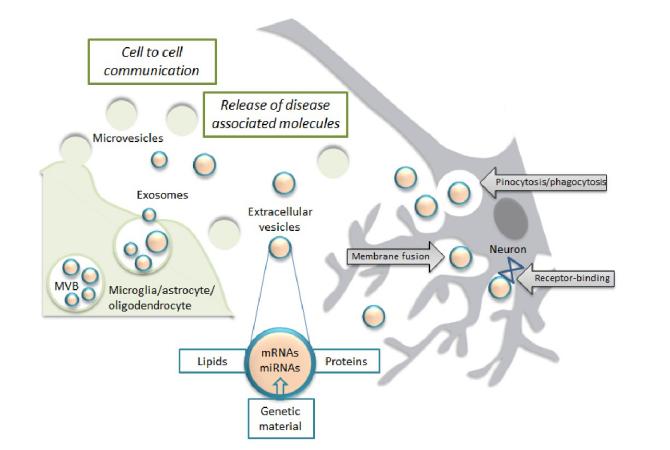
 DownLoad:
DownLoad: 